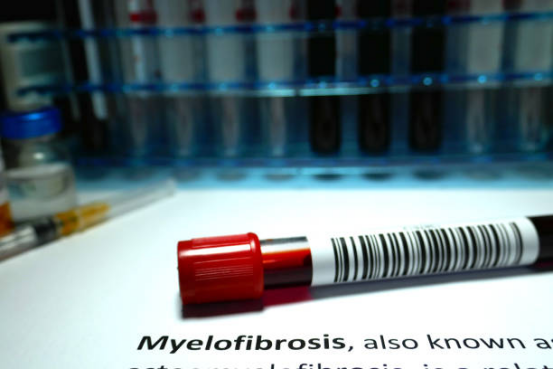Myelofibrosis: Understanding the Causes, Symptoms, and Treatment
Myelofibrosis is a rare form of blood cancer that primarily affects the bone marrow, leading to the abnormal production of blood cells. As the disease progresses, the bone marrow becomes scarred, reducing its ability to produce healthy blood cells.
Myelofibrosis is a rare form of blood cancer that primarily affects the bone marrow, leading to the abnormal production of blood cells. As the disease progresses, the bone marrow becomes scarred, reducing its ability to produce healthy blood cells.
Over time, this results in a variety of symptoms and complications that can severely affect an individual’s health. In this article, we explore the causes, symptoms, diagnostic process, and available treatments for myelofibrosis, as well as the impact of living with this chronic condition.

What is Myelofibrosis?
Myelofibrosis is a serious bone marrow disorder where scar tissue forms within the bone marrow, disrupting the normal production of blood cells. The abnormal production of blood cells leads to fibrosis in the marrow, which gradually diminishes its ability to produce healthy red blood cells, white blood cells, and platelets. As a result, individuals with myelofibrosis may experience symptoms such as anemia, enlarged spleen, and various complications affecting the body’s immune and circulatory systems.
Causes of Myelofibrosis
The exact cause of myelofibrosis remains unknown, but it is believed to be related to mutations in genes, particularly the JAK2 gene. This mutation leads to the uncontrolled production of blood cells, which over time causes scarring in the bone marrow. Environmental factors, such as exposure to radiation or toxic chemicals, may also contribute to the development of the disease, but genetic predisposition is considered the primary risk factor.
Symptoms of Myelofibrosis
The symptoms of myelofibrosis can vary greatly among individuals. While some people may experience few symptoms, others may suffer from severe complications. Common symptoms of the disease include:
- Anemia: Fatigue and weakness due to a ow red bood ce count.
- Spenomegay (Enarged Speen): An increase in the size of the speen as it works to fiter abnorma bood ces.
- Night Sweats: Excessive sweating, particuary during seep, is a common symptom.
- Fatigue: Persistent tiredness and ack of energy.
- Unexpained Weight Loss: Sudden weight oss without any cear reason.
As the disease progresses, individuals may experience additional complications, such as increased risk of bleeding, infections, and blood clots.
Diagnosing Myelofibrosis
Diagnosing myelofibrosis can be challenging because its symptoms overlap with other blood disorders. The diagnostic process typically involves a comprehensive medical history and physical examination. Several tests are commonly used to confirm the diagnosis:
- Bood Tests: These tests evauate the number of bood ces and the presence of abnorma markers.
- Bone Marrow Biopsy: A sampe of bone marrow is extracted to check for fibrosis and abnorma ce production.
- Imaging Tests: Utrasounds or CT scans may be performed to assess the size of the speen and other physica abnormaities.
Accurate and timely diagnosis is essential to determine the most appropriate treatment approach.
Treatment Options for Myelofibrosis
Treatment for myelofibrosis depends on the severity of the disease, age, general health, and specific symptoms. The main goals of treatment are to manage symptoms, slow disease progression, and enhance the patient’s quality of life. Common treatment options include:
- Medications: Medications can hep contro the symptoms, sow disease progression, and treat compications such as anemia and enarged speen.
- Chemotherapy: Chemotherapy drugs are used to target and eiminate abnorma bood ces in the marrow, though side effects are common.
- Radiation Therapy: Radiation may be used to shrink the speen or treat areas affected by cancerous growth.
- Stem Ce Transpantation: In advanced cases, a stem ce transpant may be considered to repace the damaged bone marrow with heathy stem ces.
The best treatment plan for an individual is often a combination of these approaches, depending on their specific circumstances.
Life with Myelofibrosis
Living with myelofibrosis presents both physical and emotional challenges. Patients may face regular treatments and need to manage the side effects of the disease. To help cope with myelofibrosis, it is important for patients to:
- Have Reguar Check-ups: Ongoing medica visits are crucia for monitoring the disease and adjusting treatment pans.
- Maintain a Heathy Lifestye: A nutritious diet, reguar exercise, and stress management can improve overa heath.
- Seek Emotiona Support: Support groups and counseing can hep patients dea with the emotiona burden of iving with a chronic iness.
Conclusion
Myelofibrosis is a rare and complex condition that significantly impacts a person’s ability to produce healthy blood cells. Although the exact cause remains unknown, genetic mutations and environmental factors are believed to play a role. Symptoms can range from mild to severe, but with early diagnosis and proper treatment, patients can manage the disease and improve their quality of life. Advances in therapies, including medications, chemotherapy, radiation, and stem cell transplants, offer hope for better management of the condition. Regular check-ups and emotional support are essential for those living with myelofibrosis to lead fulfilling lives.